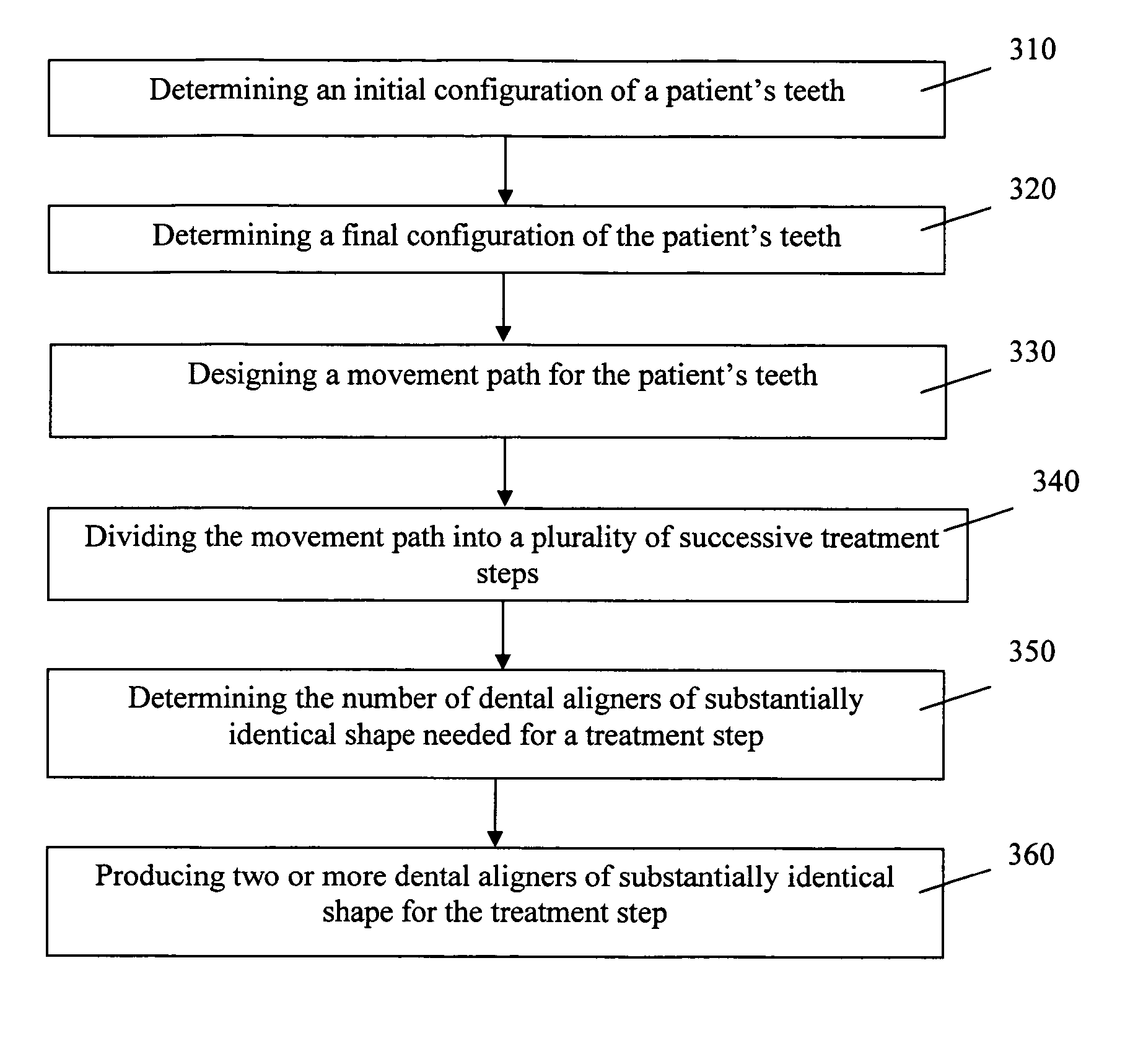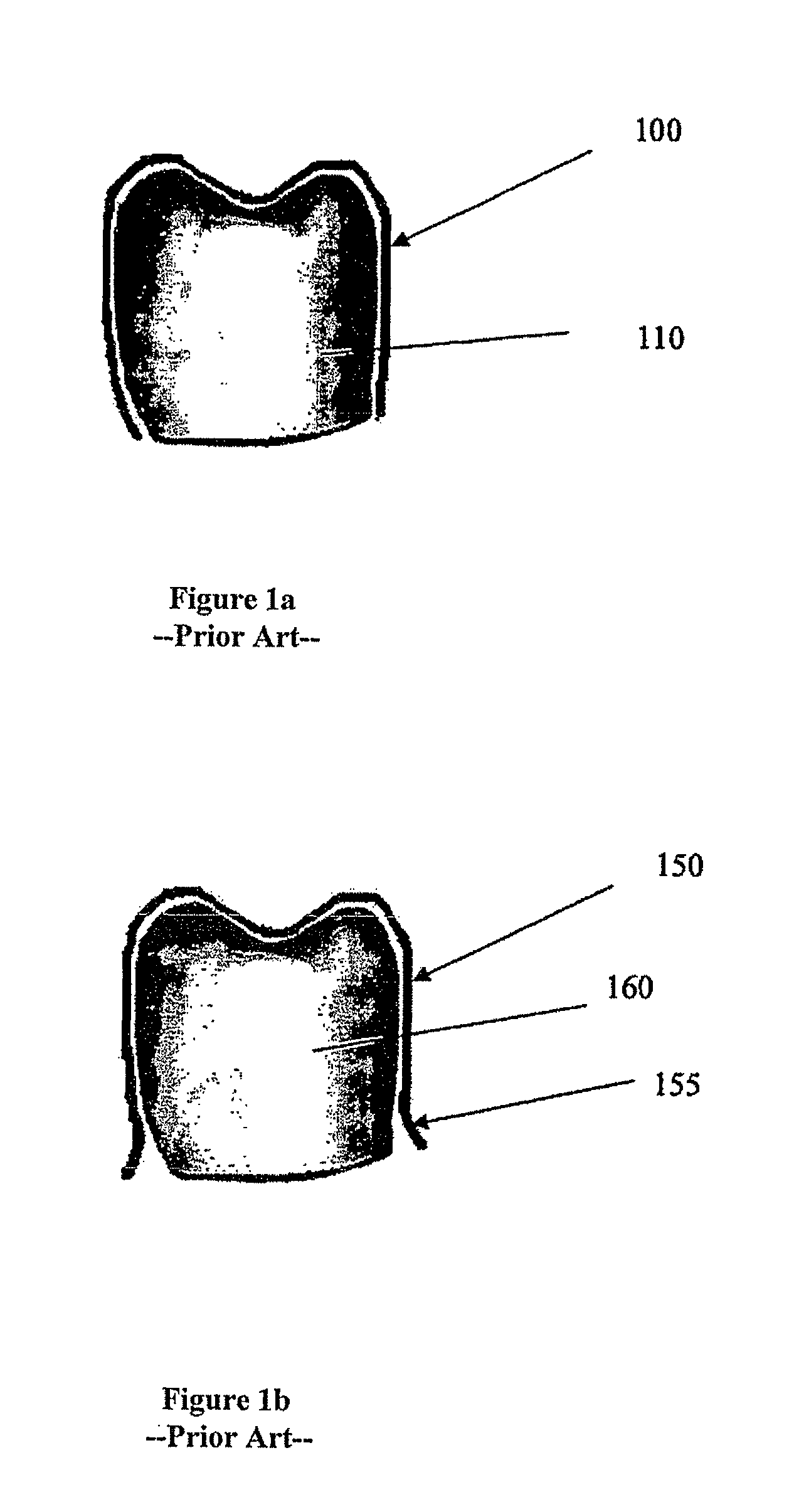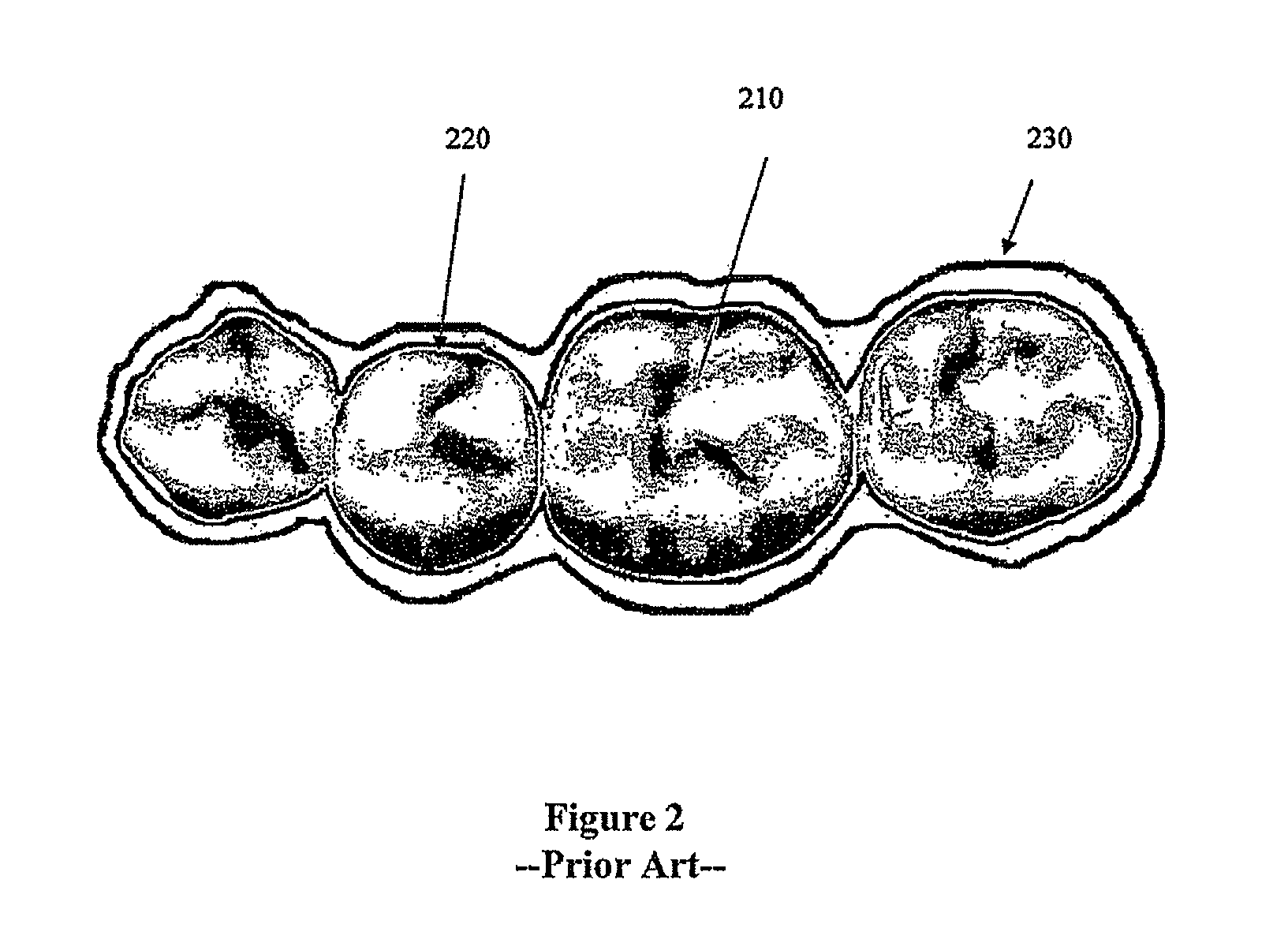Disposable dental aligner
a technology of dental aligners and brackets, applied in the field of dental care, can solve the problems of inability to accurately develop a visual three-dimensional image of an orthodontic structure, inability to accurately determine the location of the ideal bracket, and difficulty in determining the ideal bracket location, so as to achieve more accurate and effective dental treatment for patients, the effect of losing strength and ineffective and inaccurate movements of dental treatmen
- Summary
- Abstract
- Description
- Claims
- Application Information
AI Technical Summary
Benefits of technology
Problems solved by technology
Method used
Image
Examples
Embodiment Construction
[0045]Systems and methods are provided to overcome a long recognized issue with dental aligners. The aligners are made of plastic materials and can often become relaxed and open up after repeated usage by a patient. The patient can bite the aligner, causing the aligner to bend outwards. Each time the patient takes off the aligner during eating, thinking, or before sleep, the bottom part of the aligner tends to open up and relax. Furthermore, the material relaxation at the bottom of the aligner, due to usage over time, can render ineffective the application of force at the bottom of the teeth. The relaxation of the aligner can occur in as short a period as a few days of usage. The loss of corrective force applied by the aligner to the patient's teeth results in insufficient or inaccurate teeth movement. The corrective measures can include reordering of the same aligners and delay in the orthodontic treatment, which are costly for the patients.
[0046]To illustrate the above described p...
PUM
 Login to View More
Login to View More Abstract
Description
Claims
Application Information
 Login to View More
Login to View More - R&D
- Intellectual Property
- Life Sciences
- Materials
- Tech Scout
- Unparalleled Data Quality
- Higher Quality Content
- 60% Fewer Hallucinations
Browse by: Latest US Patents, China's latest patents, Technical Efficacy Thesaurus, Application Domain, Technology Topic, Popular Technical Reports.
© 2025 PatSnap. All rights reserved.Legal|Privacy policy|Modern Slavery Act Transparency Statement|Sitemap|About US| Contact US: help@patsnap.com



